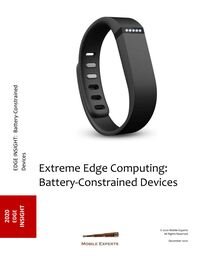 Image 1 of 1
Image 1 of 1


EDGE INSIGHT: Cost of Edge Computing for Telcos and Cloud Providers
Telcos and hyperscale cloud providers are very engaged in the edge computing space. The hyperscale cloud providers are looking to broaden the appeal of their massive cloud computing infrastructure services to wider workloads beyond typical IT applications. Operational and industrial applications that require lower latency and near real-time interactivity are the next frontier for cloud computing. Meanwhile, the Telcos see an opportunity to expand beyond their traditional network connectivity services into cloud computing by “marrying” their 5G and fiber networks with computing infrastructure at the edge to tap into the fast-growing cloud computing market. Both parties see an opportunity to leverage their core assets and skills in the emerging edge computing market to enable new use cases like private wireless, AR/VR experiences, and other low-latency applications.
The Telcos and Cloud providers appear content to go it alone in some markets while collaborating in others. SK Telecom, for instance, has set up ten or so distributed edge cloud centers in Korea and is opening up its MEC platform to developers via open APIs. Deutsche Telekom is taking a similar strategy, developing own MEC platform, and opening up to developers. Simultaneously, some operators are working with major Cloud players like Amazon Web Services (AWS), Microsoft, and Google to collaborate on multi-access edge computing (MEC) services. For instance, Verizon is working with AWS to create 5G edge computing locations and leveraging AWS’ robust developer ecosystem to develop new innovative MEC applications.
In this paper, we examine the cost profiles of Telco-driven MEC vs. Cloud MEC to see if the relative cost benefits of Telco
2020.
Telcos and hyperscale cloud providers are very engaged in the edge computing space. The hyperscale cloud providers are looking to broaden the appeal of their massive cloud computing infrastructure services to wider workloads beyond typical IT applications. Operational and industrial applications that require lower latency and near real-time interactivity are the next frontier for cloud computing. Meanwhile, the Telcos see an opportunity to expand beyond their traditional network connectivity services into cloud computing by “marrying” their 5G and fiber networks with computing infrastructure at the edge to tap into the fast-growing cloud computing market. Both parties see an opportunity to leverage their core assets and skills in the emerging edge computing market to enable new use cases like private wireless, AR/VR experiences, and other low-latency applications.
The Telcos and Cloud providers appear content to go it alone in some markets while collaborating in others. SK Telecom, for instance, has set up ten or so distributed edge cloud centers in Korea and is opening up its MEC platform to developers via open APIs. Deutsche Telekom is taking a similar strategy, developing own MEC platform, and opening up to developers. Simultaneously, some operators are working with major Cloud players like Amazon Web Services (AWS), Microsoft, and Google to collaborate on multi-access edge computing (MEC) services. For instance, Verizon is working with AWS to create 5G edge computing locations and leveraging AWS’ robust developer ecosystem to develop new innovative MEC applications.
In this paper, we examine the cost profiles of Telco-driven MEC vs. Cloud MEC to see if the relative cost benefits of Telco
2020.









